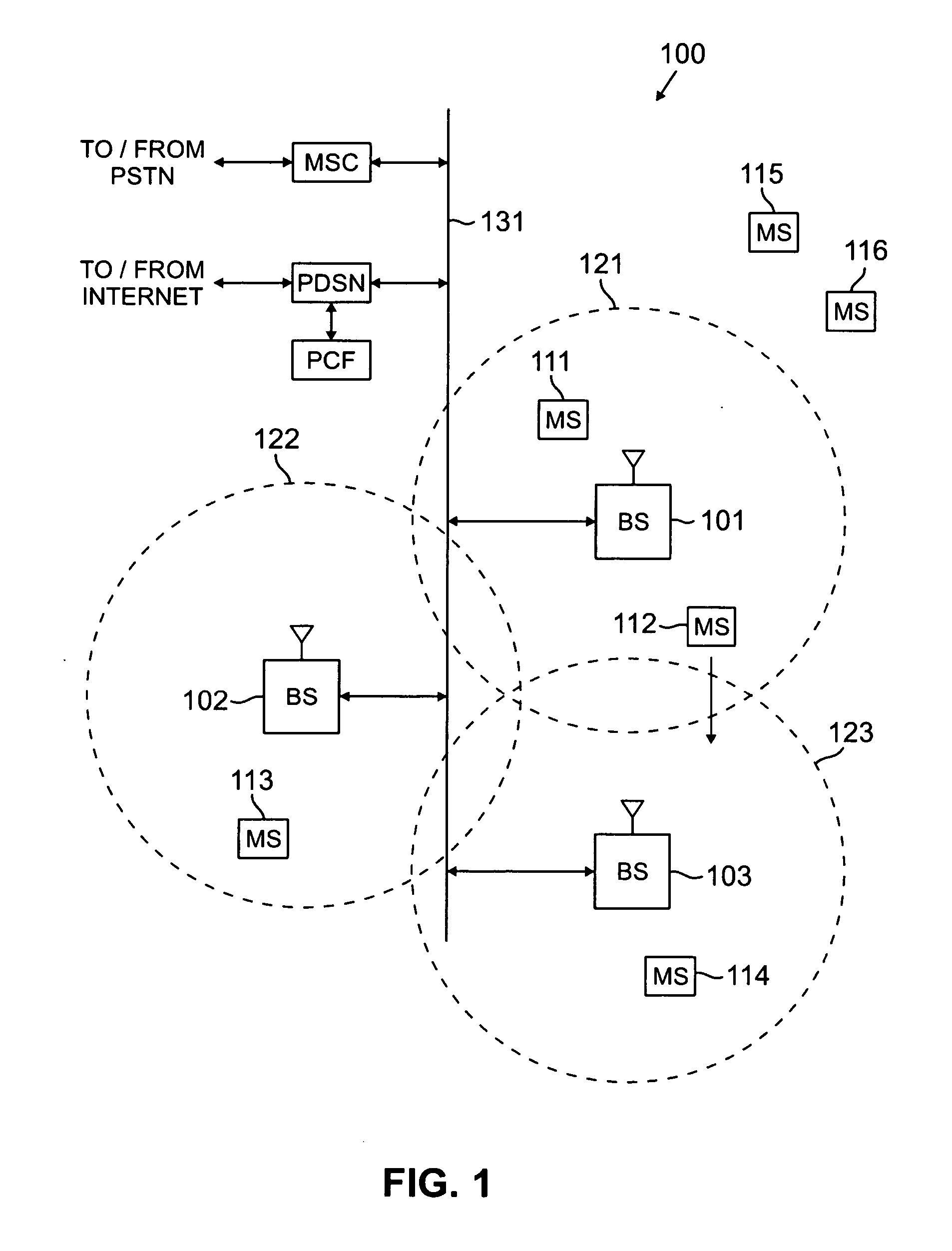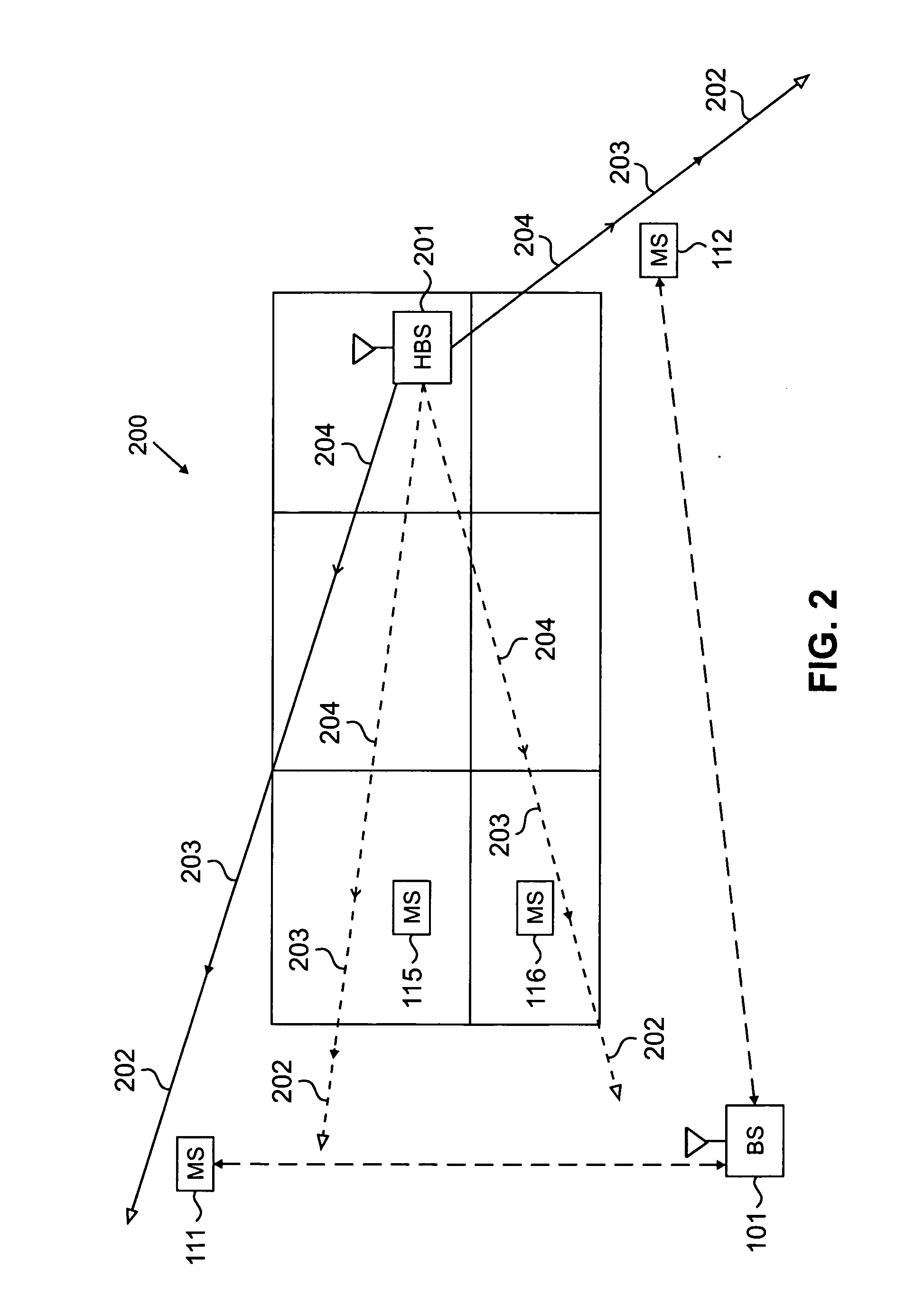Auto adaptive technique to provide adequate coverage and mitigate RF interference
a technology of rf interference and auto-adaptive technology, applied in the field of cdma wireless networks, can solve the problems of inability to reliably establish new connections for mobile stations already in rf holes, inability to provide adequate coverage, and persistent problems in the quality of service of any wireless network
- Summary
- Abstract
- Description
- Claims
- Application Information
AI Technical Summary
Benefits of technology
Problems solved by technology
Method used
Image
Examples
Embodiment Construction
[0017]FIGS. 1 through 3, discussed below, and the various embodiments used to describe the principles of the present disclosure in this patent document are by way of illustration only and should not be construed in any way to limit the scope of the disclosure. Those skilled in the art will understand that the principles of the present disclosure may be implemented in any suitably arranged system.
[0018]FIG. 1 illustrates exemplary wireless network 100, providing a context for the present disclosure. Wireless network 100 comprises a plurality of cells 121-123, each containing one of the base stations, BS 101, BS 102, or BS 103. Base stations 101-103 communicate with a plurality of mobile stations, MS 111-114, over code division multiple access (CDMA) channels. Mobile stations MS 115 and MS 116 primarily communicate with other base stations (not shown). Mobile stations 111-116 may be any suitable wireless devices (e.g., conventional cell phones, PCS handsets, personal digital assistan...
PUM
 Login to View More
Login to View More Abstract
Description
Claims
Application Information
 Login to View More
Login to View More - R&D
- Intellectual Property
- Life Sciences
- Materials
- Tech Scout
- Unparalleled Data Quality
- Higher Quality Content
- 60% Fewer Hallucinations
Browse by: Latest US Patents, China's latest patents, Technical Efficacy Thesaurus, Application Domain, Technology Topic, Popular Technical Reports.
© 2025 PatSnap. All rights reserved.Legal|Privacy policy|Modern Slavery Act Transparency Statement|Sitemap|About US| Contact US: help@patsnap.com



